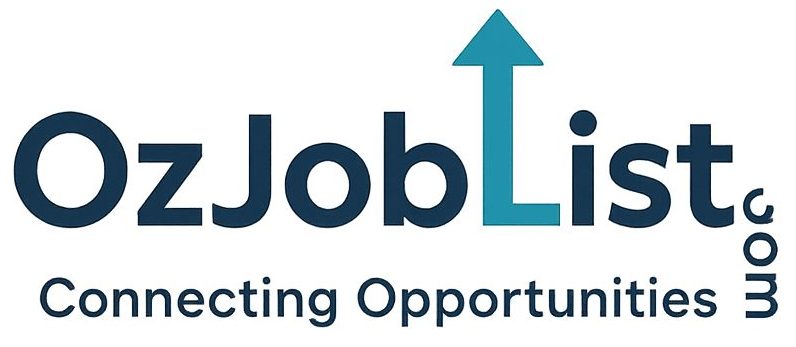Okay, let’s break down how to successfully navigate the Australian work visa process. Think of this as your guide to understanding the steps and increasing your chances of getting that “yes!”
Australia is a fantastic place to work and live, thanks to its strong economy and great lifestyle. But to work there legally as a foreigner, you need the right work visa. The process can seem tricky with different visa types and rules, but getting it right is key.
Here are 7 essential tips, drawing on key insights, to help you manage the Australian work visa application process more effectively:
1. Understand the Different Visa Types & Choose Wisely
Australia doesn’t have a one-size-fits-all work visa. There are many different types, designed for various situations, skills, and job offers. Understanding these is your first crucial step.
- What it is: A work visa is your official permission slip from the government to work in Australia. It sets rules like how long you can stay and what kind of work you can do.
- Why it matters: Choosing the wrong visa means wasted time, money, and likely rejection. Each visa has specific requirements and leads to different outcomes (like temporary vs. permanent stay).
- Common Types:
- Skilled Visas (like Subclass 189 or 190): For skilled workers, sometimes needing nomination by a state/territory, often based on a points system.
- Sponsored Visas (like Subclass 482 or 186): Require an approved Australian employer to nominate you for a specific job.
- Temporary Visas (like Subclass 485 or 417): For recent graduates of Australian institutions or young adults on working holidays.
Action: Research the visa options on the Department of Home Affairs website thoroughly. Match your skills, qualifications, age, and job situation (or potential job) to the visa criteria.
2. Know ALL the Requirements – General and Specific
Every visa has basic requirements, but each type also has its own unique checklist. You need to meet both.
- General Requirements (Common to most):
- English Proficiency: Usually proven with a test like IELTS or TOEFL. The required score varies by visa.
- Skills Assessment: For many skilled visas, a relevant authority must confirm your qualifications and experience meet Australian standards.
- Health: You’ll need medical exams to ensure you meet public health standards.
- Character: Police checks are required to show you’re of good character.
- Specific Requirements (Examples):
- Subclass 189/190: Need an occupation on the relevant skilled list, meet points test, and potentially get nominated by a state (for 190).
- Subclass 482: Must be nominated by an employer for a job on specific occupation lists and have relevant work experience.
- Subclass 186: Requires employer nomination for a permanent position and meeting skills/experience requirements.
Action: Once you’ve picked a likely visa, find its detailed requirements list on the Home Affairs website. Don’t assume anything – check every single point.
3. Prepare Your Documentation Meticulously
Your application is only as strong as the proof you provide. Missing, incorrect, or poorly organised documents are major reasons for delays or refusals.
- Key Documents Often Needed:
- Valid Passport (with enough remaining validity)
- Proof of Identity (birth certificate etc.)
- Skills Assessment Results
- English Test Results (IELTS, TOEFL, etc.)
- Educational Qualifications (diplomas, degrees, transcripts)
- Detailed Resume/CV & Employment References (proving work experience)
- Police Certificates
- Job Offer Letter & Employment Contract (if applicable/required)
- Evidence of funds (sometimes required)
Action: Create a checklist based on your specific visa requirements. Gather certified copies where needed. Ensure documents are up-to-date and translated into English by an accredited translator if necessary.
4. Follow the Application Process Step-by-Step
Applying isn’t just filling out a form; it’s a structured process.
- Typical Steps:
- Confirm Eligibility: Double-check you meet all criteria for your chosen visa.
- Expression of Interest (EOI) (if needed): For some skilled visas (like 189, 190), you first submit an EOI via SkillSelect and wait for an invitation to apply.
- Gather Documents: Collect everything from Tip 3.
- Lodge Application Online: Use the Department of Home Affairs’ ImmiAccount portal. Fill everything out accurately.
- Pay the Fee: Visa Application Charges (VAC) can be substantial. Pay promptly.
- Biometrics/Health Checks: Attend appointments as required.
- Respond to Requests: Immigration may ask for more information (RFI). Respond quickly and completely.
- Track Progress: Keep an eye on your ImmiAccount for updates.
Action: Read the specific application instructions for your visa before you start. Create your ImmiAccount early to familiarise yourself with the system.
5. Avoid Common Application Mistakes
Simple errors can derail your application. Be vigilant!
- Frequent Pitfalls:
- Incomplete/Incorrect Forms: Double-check every entry before submitting.
- Missing Documents: Use your checklist (Tip 3) religiously.
- Outdated Information: Ensure documents like police checks or English tests are within their validity period.
- Not Meeting Specific Criteria: Failing the points test, not having the required English score, or lacking sufficient work experience.
- Ignoring Policy Changes: Immigration rules can change. Stay updated via the official Home Affairs website.
- Dishonesty: Never provide false information or documents. This can lead to refusal and long bans.
Action: Review your entire application package carefully before hitting submit. If unsure about something, check the official guidance or consider seeking advice.
6. Try to Secure a Job Offer Before Applying (If Appropriate)
While not required for all visas (like the Skilled Independent 189), having a job offer from an Australian employer can significantly boost your chances for many visa types, especially sponsored ones (482, 186).
- Benefits: Shows you have in-demand skills and a clear path to contributing economically. Essential for employer-sponsored visas.
- Strategies:
- Online Job Portals: Use major Australian sites (SEEK, Indeed, CareerOne) and industry-specific boards.
- Recruitment Agencies: Connect with recruiters, especially those specialising in your field or international placements.
- Networking: Use LinkedIn, attend virtual or in-person industry events, connect with professionals in Australia.
- Company Websites: Apply directly through the careers pages of companies you’re interested in.
Action: Tailor your resume for the Australian market. Network actively and be persistent in your job search, highlighting your visa eligibility if known.
7. Understand Processing Times, Fees, and What Comes Next
Be prepared for the practicalities: time and money.
- Processing Times: Vary hugely by visa type, application completeness, and current demand. Temporary visas (like 482) might take weeks to months. Permanent skilled visas (like 189, 190) can take many months, sometimes over a year. Check the Home Affairs website for current average processing times, but treat them as estimates.
- Costs: It’s not just the visa fee (which can be thousands of dollars). Factor in costs for:
- Skills assessments
- English tests
- Health checks
- Police certificates
- Translations
- Migration agent fees (if using one)
- Post-Approval: Getting the visa isn’t the last step!
- Read Your Grant Notice: This details your visa conditions (work limitations, length of stay, etc.). You must comply with these.
- Know Your Work Rights: Understand Australian workplace laws regarding pay, conditions, and safety.
- Plan Your Move: Arrange travel, accommodation, and inform your employer (if applicable).
Action: Budget carefully for all potential costs. Be patient during processing but track your application. Once approved, understand your obligations and rights before you start working.
Applying for an Australian work visa requires careful planning and attention to detail. By understanding the types, meeting the requirements, preparing thoroughly, and avoiding common errors, you significantly improve your chances of success on your journey to working Down Under. For complex situations, consulting a registered migration agent is often a worthwhile investment.



